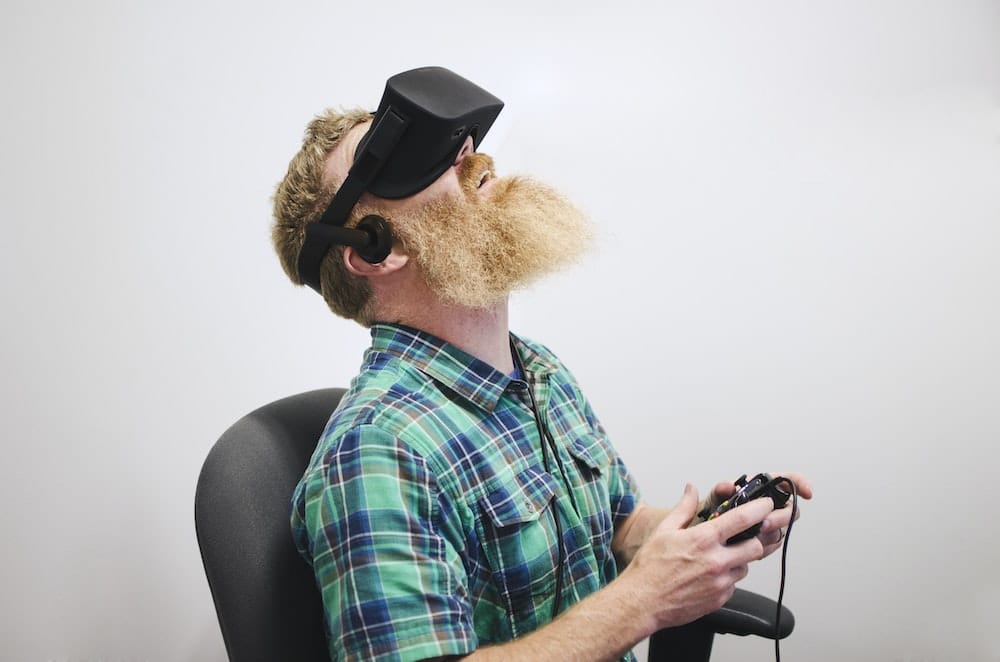What’s the Role of Augmented Reality in Real-Time Language Translation?

The seamless integration of augmented reality (AR) in our everyday life is rapidly changing how we interact with the world around us. This influential technology has made significant inroads in various sectors, from gaming and healthcare to education and tourism. One particularly exciting development is the advent of real-time language translation, where AR facilitates immediate conversion of foreign languages to our native tongue. As you delve into this article, you’ll discover the astounding role that AR is playing in transforming language translations.
Re-defining Language Learning with Augmented Reality
Language learning is no longer confined to the traditional methods of textbooks and flashcards. The advent of augmented reality technology is revolutionizing the way users learn languages. What sets AR apart is its ability to provide a virtual, immersive experience that makes learning more engaging and effective.
This might interest you : Unbox thrilling daily surprises with your mystery adventure box
With AR glasses, for instance, you can visualize the pronunciation, spelling, and usage of words in real-time. The interactive content displayed in the user’s field of view not only facilitates comprehension but also enhances retention. Imagine walking in a foreign country and being able to read and understand signs, menus, and instructions as if they were in your native language. This is the reality that AR brings to language learning.
Moreover, AR-based language learning apps provide a more personalized experience. They use user data to identify learning patterns and weaknesses, customising lessons according to individual learning styles. This personalised approach makes language acquisition faster and more efficient, thereby reducing the time required to become proficient in a new language.
Additional reading : Cigar humidifier and accessories: practical guide
Augmented Reality in Translation Technology
The process of language translation has significantly evolved with the advent of augmented reality. Traditionally, getting a text translated required a manual process that was not only time-consuming but also prone to errors. However, with AR, translations have become instantaneous and more accurate, removing language barriers in real-time.
Google Translate, for example, uses AR technology to provide live translations. Users only need to point their smartphone cameras at the foreign text, and the app translates the content in real-time. This application of AR in translation technology is particularly useful in navigating unfamiliar environments or understanding complex foreign documents.
Similarly, AR glasses, like Google Glass, offer a hands-free translation experience. When users look at a foreign text through these glasses, the translated text appears in their field of vision. This immediate translation capability facilitates seamless communication, irrespective of language differences.
Augmented Reality: Reinventing User Experiences
Augmented reality is not only redefining translations and language learning but also reinventing the overall user experience. With the ability to overlay digital content onto the real world, AR provides users with a more immersive and interactive experience.
In the context of language translation, this immersion can result in a more comprehensive understanding of foreign cultures. For instance, AR can supplement text translations with relevant images, audio descriptions, and historical context. This additional content aids in a more profound understanding of the translated material, thereby enriching the user’s cultural learning experience.
Moreover, AR can create a real-time interactive language learning environment where users get immediate feedback about their pronunciation and grammar. The instant correction and reinforcement will help users improve their language skills more quickly and effectively.
The Future of Language Translation with Augmented Reality
As augmented reality continues to evolve, its impact on language translations is expected to deepen. Future advancements might enable AR devices to understand and interpret not just written text, but also spoken language. This capability could allow users to carry out real-time conversations with people speaking different languages, which would provide a truly global communication experience.
In addition, as AR technology becomes more sophisticated, the quality of translations is likely to improve. Future AR devices could potentially identify and understand nuances, figurative language, and cultural references in text. Such advancements will not only make translations more accurate but also convey the true essence of the content.
Lastly, as AR becomes more mainstream, we can expect to see more AR-based language learning solutions. These solutions will likely be more immersive and interactive, providing users with a more engaging learning experience. Augmented reality, therefore, holds a promising future in the realm of language translations, bringing the world closer by breaking down language barriers.
Making Global Communication Easier with Augmented Reality
Augmented reality is democratizing global communication. Using AR, anyone can understand and converse in a foreign language, removing language barriers and fostering cultural understanding. This technology, thus, plays a significant role in promoting global reach and inclusivity.
AR-based translation apps like Google Translate and Word Lens are facilitating instant, real-time translation of foreign text. They allow users to understand foreign languages simply by pointing their smartphone cameras at a written text. In addition to text translations, these apps also offer voice translation features, enabling users to have real-time conversations with non-native speakers. With the help of machine translation, these apps can interpret and translate spoken words almost instantaneously.
Moreover, AR is reshaping the way we interact with the world. It can deliver immersive cultural experiences by overlaying additional context onto the translated text. For instance, when translating a menu item, AR can provide images of the dish, its ingredients, and even its history. This not only makes the translation process more informative but also more engaging.
However, it’s essential to note that the accuracy of augmented translation largely depends on the effectiveness of the machine learning algorithms deployed. While the current technology has significantly improved, there is still room for advancement, especially in understanding and translating colloquial phrases, idioms, and slang terms.
Conclusion: Augmented Reality – The Future of Language Translation
In conclusion, augmented reality is playing a ground-breaking role in the transformation of language learning and translation. It is making language learning more engaging, interactive, and personalised. Moreover, it is revolutionising translation technology by offering real-time, accurate translations and thereby eliminating language barriers.
The future of language translation with augmented reality is undoubtedly promising. As the technology matures, we can expect more sophisticated features, including better understanding of nuances, figurative language, and cultural references. AR devices might also be able to interpret spoken language in real-time, enabling seamless conversations with people speaking different languages.
The integration of AR in language learning and translation signifies a paradigm shift in the way we communicate and learn. It not only enhances the user experience but also fosters global reach and cultural understanding. As we move towards an increasingly globalised world, augmented reality will continue to play an essential role in breaking down language barriers and promoting mutual understanding.
